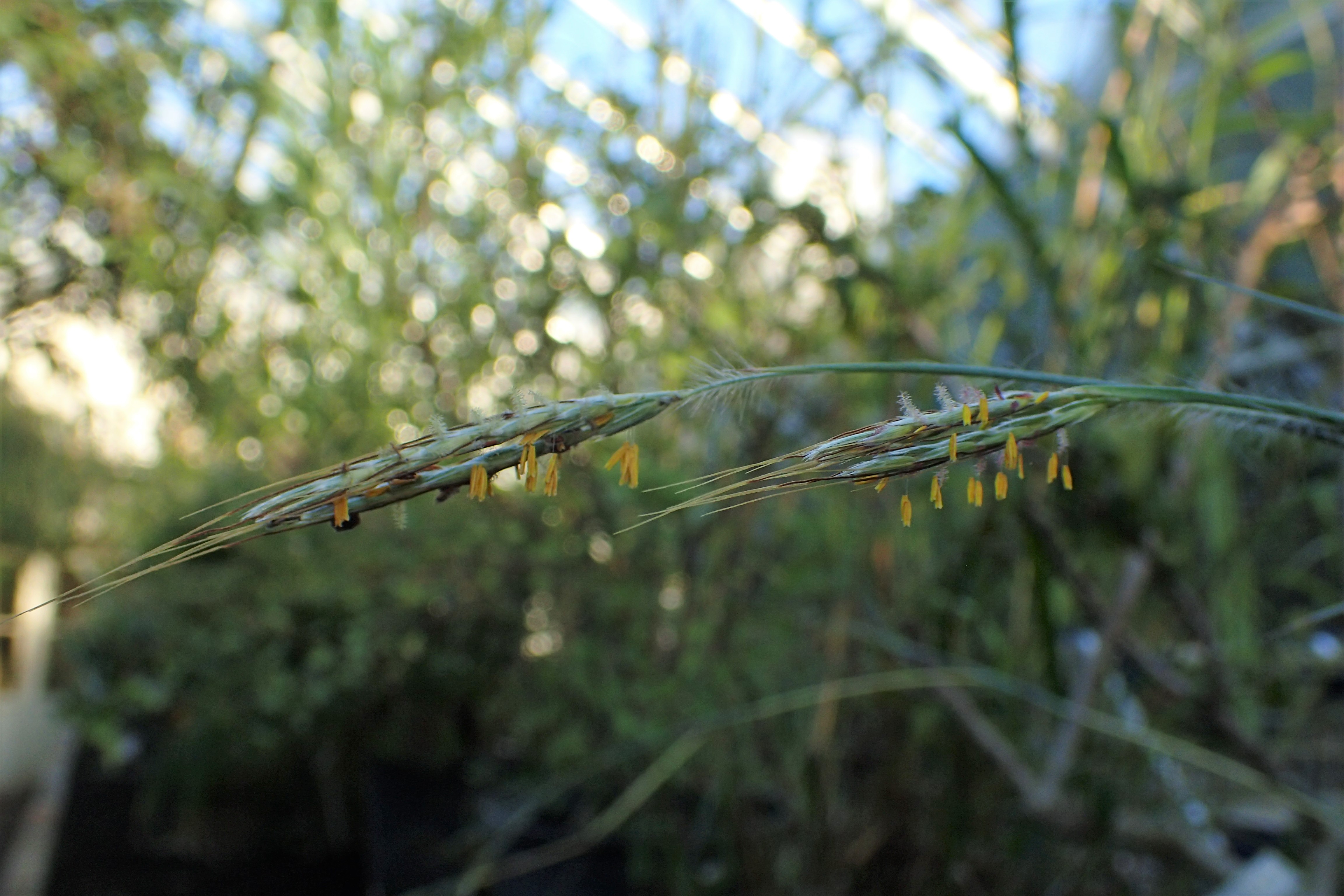Compilospecies on:
[Wikipedia]
[Google]
[Amazon]
A compilospecies is a genetically aggressive species which acquires the heredities of a closely related sympatric species by means of hybridisation and comprehensive introgression. The target species may be incorporated to the point of despeciation, rendering it extinct. This type of genetic aggression is associated with species in newly disturbed habitats (such as pioneering species), weed species and domestication. They can be diploid or
 Compilospecies were first described by Harlan and de Wet in 1962, who examined a wide range of grasses and other species such as '' Bothriochloa intermedia'', otherwise known as Australian bluestem grass. ''B. intermedia'' was found to introgress heavily with neighboring sympatric grass species and even genera, particularly in geographically restricted areas. The species itself is of hybrid origin, containing genetic material from five or more different grass species. Harlan and de Wet examined the interactions between the genera '' Bothriochloa, Dichanthium and Capillipedium'' - an apomictic complex of grasses from the tribe
Compilospecies were first described by Harlan and de Wet in 1962, who examined a wide range of grasses and other species such as '' Bothriochloa intermedia'', otherwise known as Australian bluestem grass. ''B. intermedia'' was found to introgress heavily with neighboring sympatric grass species and even genera, particularly in geographically restricted areas. The species itself is of hybrid origin, containing genetic material from five or more different grass species. Harlan and de Wet examined the interactions between the genera '' Bothriochloa, Dichanthium and Capillipedium'' - an apomictic complex of grasses from the tribe
polyploid
Polyploidy is a condition in which the cells of an organism have more than one pair of ( homologous) chromosomes. Most species whose cells have nuclei ( eukaryotes) are diploid, meaning they have two sets of chromosomes, where each set contain ...
, as well as sexual or primarily asexual. The term compilospecies derives from the Latin word compilo, which means to seize, to collect, to rob or to plunder. A proposed explanation for the existence of such a species with weak reproductive barriers and frequent introgression is that it allows for genetic variation. An increase in the gene pool through viable hybrids can facilitate new phenotype
In genetics, the phenotype () is the set of observable characteristics or traits of an organism. The term covers the organism's morphology or physical form and structure, its developmental processes, its biochemical and physiological pr ...
s and the colonisation of novel habitats. The concept of compilospecies is not frequent in scientific literature and may not be fully regarded by the biological community as a true evolutionary concept, especially due to low supporting evidence.
History
 Compilospecies were first described by Harlan and de Wet in 1962, who examined a wide range of grasses and other species such as '' Bothriochloa intermedia'', otherwise known as Australian bluestem grass. ''B. intermedia'' was found to introgress heavily with neighboring sympatric grass species and even genera, particularly in geographically restricted areas. The species itself is of hybrid origin, containing genetic material from five or more different grass species. Harlan and de Wet examined the interactions between the genera '' Bothriochloa, Dichanthium and Capillipedium'' - an apomictic complex of grasses from the tribe
Compilospecies were first described by Harlan and de Wet in 1962, who examined a wide range of grasses and other species such as '' Bothriochloa intermedia'', otherwise known as Australian bluestem grass. ''B. intermedia'' was found to introgress heavily with neighboring sympatric grass species and even genera, particularly in geographically restricted areas. The species itself is of hybrid origin, containing genetic material from five or more different grass species. Harlan and de Wet examined the interactions between the genera '' Bothriochloa, Dichanthium and Capillipedium'' - an apomictic complex of grasses from the tribe Andropogoneae
The Andropogoneae, sometimes called the sorghum tribe, are a large tribe of grasses (family Poaceae) with roughly 1,200 species in 90 genera, mainly distributed in tropical and subtropical areas. They include such important crops as maize (corn), ...
- and used the cytogenetic
Cytogenetics is essentially a branch of genetics, but is also a part of cell biology/cytology (a subdivision of human anatomy), that is concerned with how the chromosomes relate to cell behaviour, particularly to their behaviour during mitosis an ...
model of these as a basis for the compilospecies concept. Species within these genera exhibit both sexual and asexual reproduction, high heteriozygosity, ploidies from 2x to 6x, and gene flow between bordering populations as evidence of ongoing introgression. However, this gene flow is only made possible in the presence of ''B. intermedia'', which introgression moves towards, and the absence of which keeps the other species reproductively isolated
The mechanisms of reproductive isolation are a collection of evolutionary mechanisms, behaviors and physiological processes critical for speciation. They prevent members of different species from producing offspring, or ensure that any offsprin ...
. ''B. intermedia'' is identified as the compilospecies in this model.
Further examples
Other researched examples of compilospecies include; * ''Helianthus
''Helianthus'' () is a genus comprising about 70 species of annual and perennial flowering plants in the daisy family Asteraceae commonly known as sunflowers. Except for three South American species, the species of ''Helianthus'' are native to ...
'' (sunflowers)
* ''Draba
''Draba'' is a large genus of flowering plants in the family Brassicaceae, commonly known as whitlow-grasses (though they are not related to the true grasses).
Species
There are over 400 species:
*'' Draba abajoensis'' Windham & Al-Shehbaz
*'' ...
'' (whitlow-grasses)
* '' Armeria villosa''
References
{{Reflist Biological concepts Biology terminology Botanical nomenclature Plant taxonomy Species Zoological nomenclature